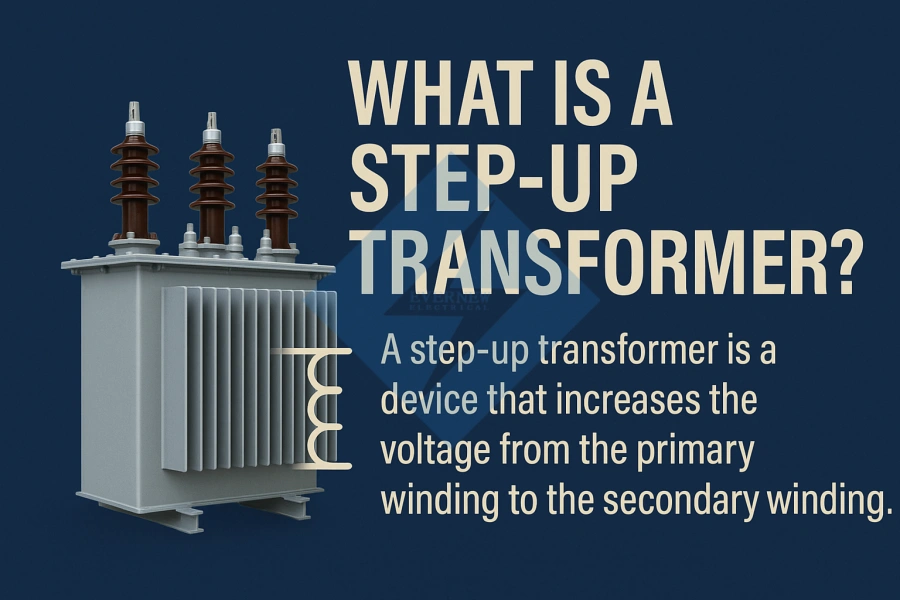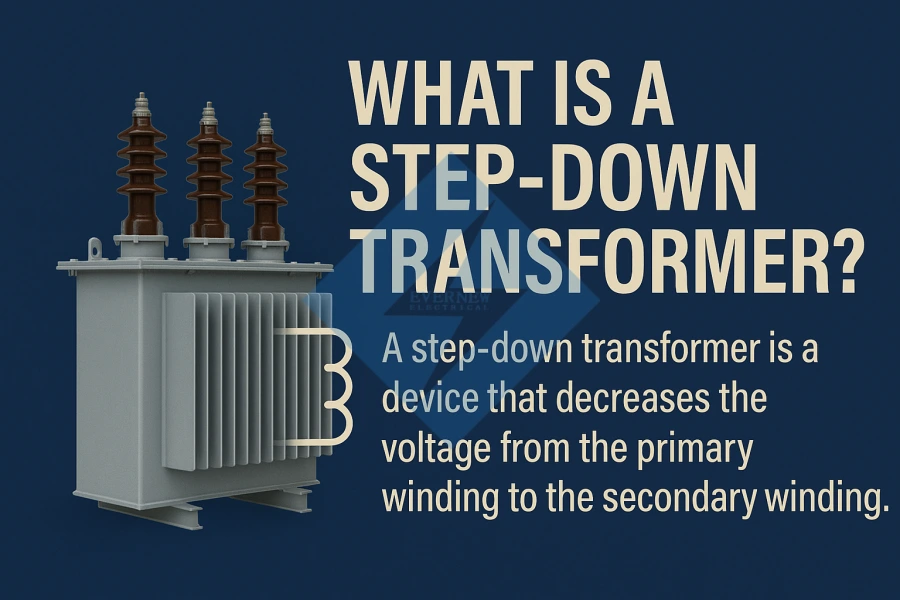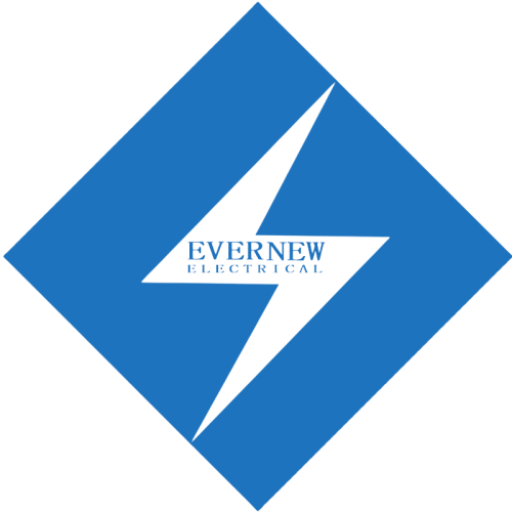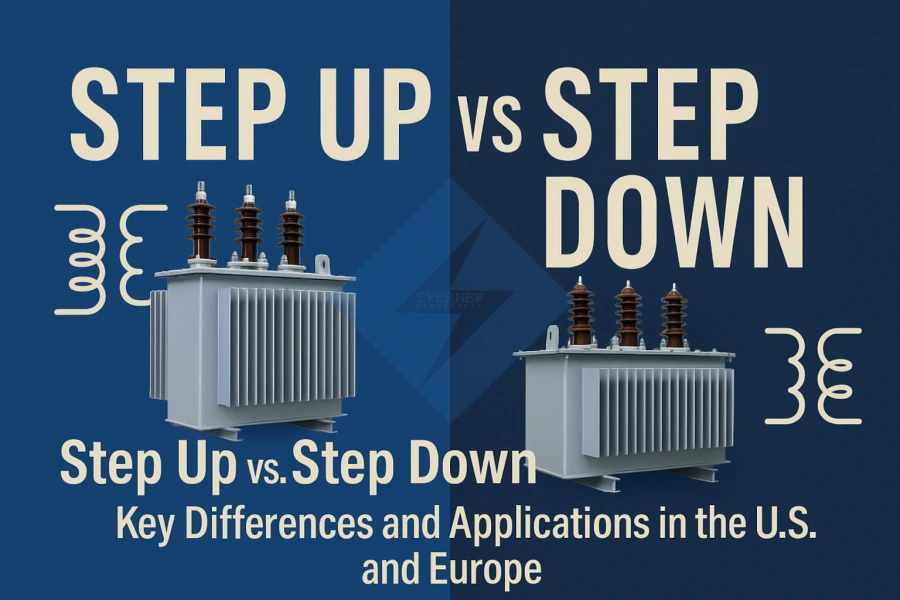Di dunia yang saling terhubung saat ini, transformasi tegangan yang efisien sangat penting untuk memastikan transmisi dan distribusi daya yang aman, andal, dan hemat biaya. Naiklah. dan turunkan transformator daya memainkan peran penting dalam mengadaptasi tegangan untuk memenuhi standar regional dan persyaratan aplikasi. Baik Anda memberi daya pada kota, stasiun pengisian daya EV, atau pabrik, memahami perbedaan antara kedua jenis transformator ini adalah kuncinya - terutama di seluruh pasar seperti Amerika Serikat dan Eropadi mana standar tegangan dan infrastruktur berbeda secara signifikan.
1. Apa yang dimaksud dengan Trafo Daya Step Up?
A meningkatkan transformator daya meningkatkan tegangan dari level yang lebih rendah ke level yang lebih tinggi. Biasanya digunakan di lokasi pembangkit listrik untuk meningkatkan tegangan sebelum listrik dikirim melalui saluran transmisi yang panjang. Tegangan yang lebih tinggi mengurangi arus dan meminimalkan kerugian transmisi dari jarak jauh.
Kasus penggunaan yang umum meliputi:
Pembangkit listrik tenaga surya dan angin skala utilitas
Pembangkit listrik yang terhubung ke jaringan transmisi
Peralatan ekspor yang membutuhkan adaptasi ke sistem tegangan yang lebih tinggi

2. Apa yang dimaksud dengan Trafo Daya Langkah Turun?
A turunkan transformator daya mengurangi tegangan dari level yang lebih tinggi ke level yang lebih rendah. Hal ini sangat penting untuk menyalurkan listrik dengan aman ke rumah, bangunan komersial, dan mesin. Tanpa keduanya, transmisi tegangan tinggi akan terlalu berbahaya dan tidak kompatibel dengan peralatan standar atau pengisi daya listrik.
Trafo step down banyak digunakan di:
Distribusi daya perumahan
Bangunan komersial
Pusat data
Stasiun pengisian daya kendaraan listrik
Dapatkan lebih banyak lagi:10 Kesalahan Teratas yang Harus Dihindari Saat Membeli Transformator Daya (dan Cara Memilih yang Tepat)

3. Bagaimana Cara Kerja Transformator Step Up dan Step Down?
Langkah-up dan transformator step-down keduanya beroperasi dengan prinsip dasar induksi elektromagnetikditemukan oleh Michael Faraday. Prinsip ini menyatakan bahwa medan magnet yang berubah di dalam kumparan kawat menginduksi tegangan pada kumparan di dekatnya. Transformator menggunakan prinsip ini untuk secara efisien mengubah level tegangan dalam sistem arus bolak-balik (AC) - tanpa bagian yang bergerak atau perubahan frekuensi.
Transformator terdiri dari dua belitan utama:
The belitan primeryang menerima tegangan input.
The belitan sekunderyang memberikan tegangan output.
Gulungan ini dililitkan di sekitar inti magnetik yang umum, biasanya terbuat dari baja silikon laminasi untuk mengurangi kehilangan energi melalui arus eddy.
🔁 Transformasi Tegangan Bergantung pada Rasio Putaran
Kunci untuk menentukan apakah transformator menaikkan atau menurunkan tegangan terletak pada rasio putaranyang merupakan rasio jumlah lilitan kawat pada kumparan sekunder terhadap jumlah lilitan pada kumparan primer.
Trafo Penambah Daya:
The belitan sekunder memiliki lebih banyak belokan daripada belitan primer.
Hal ini menghasilkan tegangan keluaran yang lebih tinggi dari tegangan input.
Umumnya digunakan di stasiun pembangkit listrik untuk meningkatkan tegangan (misalnya, dari 11kV untuk 132kV atau lebih tinggi) untuk transmisi jarak jauh yang efisien.
Trafo Langkah-Bawah:
The belitan sekunder memiliki lebih sedikit belokan daripada belitan primer.
Hal ini menghasilkan tegangan keluaran yang lebih rendah dari tegangan input.
Digunakan di dekat titik konsumsi untuk mengurangi tegangan secara aman (misalnya, dari 20kV ke 400V) untuk aplikasi perumahan, komersial, atau pengisi daya EV.
⚡ Contoh:
Jika sebuah transformator memiliki belitan primer 100 lilitan dan belitan sekunder 200 lilitan, tegangan output akan menjadi dua kali tegangan input - ini adalah langkah-up. Sebaliknya, jika sekunder memiliki 50 lilitan, tegangan output adalah setengah dari input-ini adalah mundur.
🧠 Catatan Penting:
Transformer hanya bekerja dengan arus bolak-balik (AC) karena AC secara alami menghasilkan perubahan medan magnet yang diperlukan untuk induksi. Mereka tidak berfungsi dengan arus searah (DC).
Efisiensi dalam transformator modern sering kali melebihi 95%sehingga sangat penting untuk meminimalkan kerugian dalam jaringan listrik.
Transformator step-up dan step-down dapat berupa terendam minyak atau tipe keringtergantung pada persyaratan pendinginan dan pemasangan.
Singkatnya, meskipun transformator step-up dan step-down menjalankan fungsi tegangan yang berlawanan, keduanya mengandalkan prinsip kerja yang sama persis. Satu-satunya perbedaan terletak pada desain belitan dan kebutuhan tegangan spesifik aplikasi.
4. Standar Tegangan: A.S. vs Eropa
Memahami standar tegangan sangat penting untuk memilih trafo yang tepat:
| Wilayah | Tegangan Perumahan | Frekuensi | Tegangan Industri (Umum) |
|---|---|---|---|
| Amerika Serikat | 120/240 V | 60 Hz | 480 V, 13,8 kV |
| Eropa | 230/400 V | 50 Hz | 10 kV, 20 kV |
Variasi ini menuntut solusi peningkatan atau penurunan yang disesuaikan ketika mengimpor/mengekspor peralatan atau mengintegrasikan sistem internasional.
Pelajari Lebih Lanjut:Trafo Gardu Induk 3 Fasa 6000 KVA untuk Distribusi Daya
5. Perbedaan Utama: Naik ke Atas vs Turun ke Bawah
| Fitur | Trafo Langkah Naik | Trafo Langkah Turun |
|---|---|---|
| Tujuan | Meningkatkan tegangan | Kurangi tegangan |
| Lokasi | Pembangkit listrik tenaga dekat | Dekat dengan konsumen |
| Tegangan Umum | 11kV → 110kV atau 400kV | 11kV → 400V atau 230V |
| Aplikasi | Efisiensi transmisi | Keamanan dan penggunaan pengguna akhir |
| Pertimbangan Desain | Persyaratan isolasi yang lebih tinggi | Pendinginan yang lebih baik untuk beban LV |
6. Aplikasi di Amerika Serikat
Sektor utilitas: Transmisi tegangan tinggi (naik), gardu induk jaringan lokal (turun)
Manufaktur industri: Turun ke 480V, 240V untuk mesin
Infrastruktur kendaraan listrik: Pengisi daya Level 3 yang didukung oleh transformator step down
Microgrid: Meningkatkan output PV surya ke jaringan listrik
7. Aplikasi di Eropa
Pertanian energi terbarukan: Naikkan hingga 20 kV atau 110 kV kisi-kisi
Infrastruktur perkotaan: Trafo mundur di metro, trem
Pusat data: Pengiriman tegangan rendah melalui trafo step down
Bangunan komersial: Sistem 400V untuk penerangan, HVAC, server
8. Memilih Transformator yang Tepat
Faktor-faktor utama yang perlu dipertimbangkan:
Tegangan input/output
Frekuensi (50 Hz di Eropa, 60 Hz di A.S.)
Kapasitas terukur (kVA atau MVA)
Efisiensi dan kerugian
Pemasangan di dalam atau di luar ruangan (penutup dengan peringkat IP)
Kelompok vektor dan impedansi
Baca Lebih Lanjut:Trafo yang Dipasang di Pad
9. Peraturan dan Sertifikasi
Untuk memastikan kepatuhan dan keamanan, trafo harus memenuhi standar regional dan internasional:
UL / CSA - Umum di Amerika Serikat dan Kanada
CE / IEC - Diterima secara luas di seluruh Eropa
RoHS / JANGKAUAN - Kepatuhan terhadap lingkungan dan material
10. Pertimbangan Pemeliharaan
Apakah Anda memilih terendam minyak atau transformator tipe keringperawatan rutin sangatlah penting:
Periksa sistem pendingin dan level oli
Periksa bushing dan sambungan
Memantau suhu dan kondisi beban
Ganti insulasi atau gasket yang sudah tua
11. Inovasi dalam Teknologi Transformator
Jaringan listrik modern mengintegrasikan trafo pintar tawaran itu:
Pemantauan dan diagnostik waktu nyata
Kontrol jarak jauh melalui SCADA/IoT
Perlindungan kelebihan beban yang ditingkatkan
Kompatibilitas dengan sistem terbarukan dan hibrida
Inovasi-inovasi ini sangat relevan untuk kota pintar dan infrastruktur pengisian daya mobil listrik generasi berikutnya.
12. Mengapa Memilih Produsen Transformer Cina?
Pabrikan Cina seperti Transformer Evernew menawarkan:
Kisaran tegangan penuh dari 6kV hingga 500kV
Kustomisasi OEM & ODM
Pengiriman cepat dan harga yang kompetitif
Sertifikasi global: UL, CE, ISO, TUV
Pengalaman ekspor ke AS, Kanada, Eropa, Timur Tengah
Mereka meningkatkan dan menurunkan transformator daya secara luas digunakan dalam proyek-proyek utilitas, energi terbarukan, dan infrastruktur di seluruh dunia.
13. Kesimpulan
Apakah Anda perlu meningkatkan voltase untuk transmisi yang efisien atau menguranginya untuk penggunaan yang aman, pahami melangkahlah dan turunkan transformator daya sangat penting - terutama dalam aplikasi energi lintas batas. Dari AS hingga Eropa, pemilihan transformator berdampak pada keselamatan, kinerja, dan kepatuhan.
Saat memilih mitra, pastikan produsen menawarkan keduanya keandalan teknis dan kepatuhan bersertifikat. Jika Anda merencanakan proyek listrik berikutnya, sekaranglah waktunya untuk berinvestasi pada solusi transformator yang efisien dan siap untuk masa depan.

